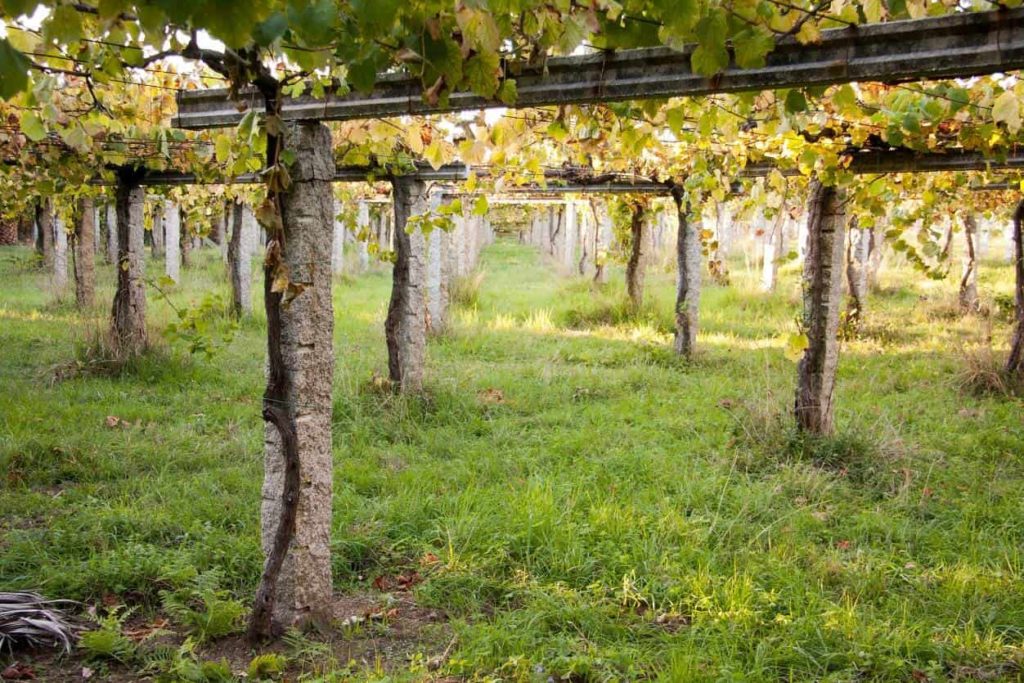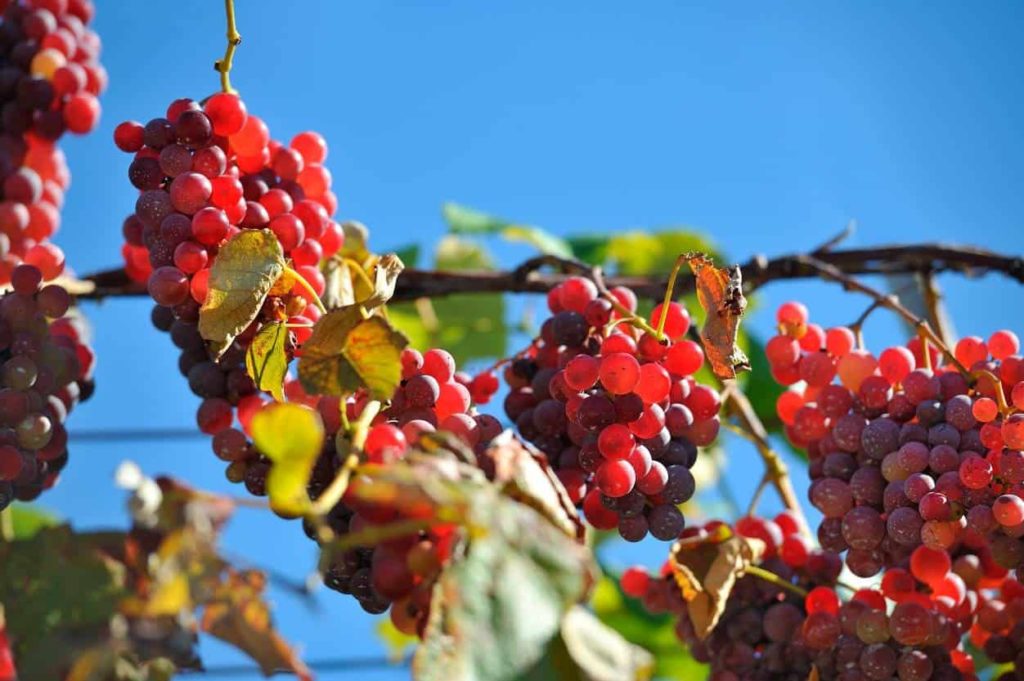
Spanish wine regions: an overview of Galician wine

The municipality of Galicia, in northern Spain, bordering Portugal, is also known as ‘Green Spain’; verdant scenery and a good deal of rain define life here. You’ll discover a world far removed from the ‘sun and sangria’ stereotype of the country. The region borders the Atlantic to the North and the East and Portugal to the south. Wine production in the region dates back to Roman times. Today, the Spanish wine region’s signature export is fresh, saline white wine; however, Galicia also makes some excellent reds, particularly in the hills of Ribeira Sacra and Monterrei. There is also increasing experimentation in the region.
In the 20th century, Spanish exports were almost exclusively driven by Rioja, Sherry, and Cava. Fruit-driven and unoaked whites were virtually unheard of in Spain at the time. However, in the last fifteen years, there has been sustained growth in producing exceptional Spanish white wine. Spain has introduced new styles and rediscovered indigenous grape varieties, with Galicia at the forefront of this Spanish white wine revolution.
Click on a link to jump to that section:
Climate, geography and terroir
This luscious and damp corner of northwest Spain owes much to the Atlantic. The most crucial appellation, Rías Baixas, is constantly visited by ocean mists from the western and northern coastlines – this helps to cool the vine canopy during the summer months. As a result, the growing season in Galicia is generally long, with moderately warm temperatures in July/August and ample rainfall. This slows the ripening process, leading to super-fresh wines with balanced alcohol and highly aromatic fruit. However, there is a transition from maritime to continental influences as you move further inland; the small appellation of Ribeiro is very close to Rías Baixas, and yet it is protected from the Atlantic by the Sierra del Suido mountain range. Meanwhile, Ribeira Sacra, Monterrei and Valdeorras are all warm enough to ripen red grape varieties due to their inland position and concomitant drier, warmer climate. The soils of Galicia are no less heterogeneous, ranging from the granite of Rias Baixas to the slate terroir of Valdeorras.

Key Galician sub-regions
Rías Baixas
Galician town, Santiago de Compostela, is fortunate to have the region of Rías Baixas on its doorstep. The appellation, Rías Baixas DO, produces an astonishing amount of excellent white wine best enjoyed in the atmospheric tapas bars of the city’s old town. Albariño, the region’s signature grape variety, makes up 90% of the output in Rías Baixas.
Today Rías Baixas is divided into five distinct sub-zones, each offering a unique set of conditions which impact the final wine style. Val do Salnès is renowned for its cool mesoclimate and perfumed whites with fresh acidity. Condado do Tea is the warmest of the sub-zones, being furthest from the coast. O Rosal, situated close to the Portuguese border, produces ripe wines with good acidity. Soutomaior is renowned for producing mineral-driven Albariño wine, and finally, Ribera do Ulla delivers intensely aromatic, medium-bodied perfumed wines. There is also significant variance in the local soils, ranging from metamorphic granite to alluvial matter.
Ribeiro
Ribeiro is a small zone situated on the Miño river flowing into Portugal. Grapes have been cultivated in this Galacian wine region since Roman times, and by the Middle Ages, the region was shipping vast quantities of Ribeiro wine to England. The region declined in the 20th century, and many growers abandoned their vineyards. Investor Francisco Perez and winemaker José Manuel Martínez have since turned the region around. The local climate, although warmer and drier than Rías Baixas, is ideally suited to producing aromatic white styles. The grape varieties for dry white Ribeiro are Treixadura, Albariño, and, increasingly, the Godello grape of Valdeorras. A small amount of Galacian red wines are also made here, mainly from Alicante Bouschet, but Tempranillo, Garnacha Tintoera and Caiño Tinto are also cultivated.
Ribeira Sacra
If you travel east from the city of Ourense, you’ll soon arrive at Ribeira Sacra. The zone is far larger but less renowned than Ribeiro. However, a world of premium quality can be found here, including some excellent red wine based on Mencía. The appellation is known for its terraced vineyards on dramatically steep Sil River and Miño River banks. Well-drained slate soils are an essential part of the equation here. Leading vineyard sites enjoy a warmer and drier climate than Rías Baixas further west, yielding perfumed and concentrated wines.
Valdeorras
You may struggle to find a finer source of Godello in Spain than the hilly landscape of Valdeorras. Valdeorras, in Galicia, bordering Castilla y Léon. Winemaker Rafael Palacios has heavily promoted the region and has taken advantage of the metamorphic terroir and benign climate. Growers produce mineral scented Godello wines, celebrated for their bouquet of stone fruit and lime cordial. The top vineyard sites deliver wines of incomparable structure and finesse. The Mencía styles produced here are no less pleasing.
Monterrei
Monterrei is fast becoming one of Galicia’s most exciting wine zones. It is located on the Portuguese border in the south-eastern corner of the Galicia. Awarded DO status in 1994, the winegrowing area is centred around the Tamega River – a tributary that flows into the Duoro, home of Port wine. Due to the continental climate (warm/dry summers and cold winters), producers can fashion excellent reds in Monterrei, not least from Mencía. Soils vary from granite and slate to clay. However, the most critical factor in Monterrei is elevation. Indeed, some higher-altitude sites offer significant diurnal temperature variation; a decline of up to 30 degrees at night is not unheard of. Diurnal temperature variation is the secret behind Monterrei’s fresh and racy red and white wines, even in warm vintages.
Key Galician grape varieties
White grapes
- Albariño – the star white grape of Galicia. It yields aromatic white wines with citrus, grapefruit, and lemongrass notes. Albariño is thick-skinned and relatively robust, most commonly found in Rías Baixas. The best examples are Galicia’s answer to New Zealand’s Sauvignon Blanc.
- Godello – many critics regard Godello as Spain’s finest white grape. When matured in barrique, it can produce wines to give Puligny-Montrachet a run for its money. The best examples are full-bodied, powerfully structured, and complex.
- Treixadura – indigenous to northwest Spain, Treixadura almost became extinct in the 20th century after the phylloxera louse wiped out vines across the globe. However, several pioneering winemakers have championed the grape, despite its susceptibility to parasites (Peronospora and Oidium) in wet vintages. It is occasionally blended with Albariño to enhance perfume and structure.

- Mencía – old vine Mencía is exceptionally elegant and fruit-driven; it produces the best results when planted on free-draining schist terroir.
- Caiño Tinto – this grape can be challenging to tame in the vineyard due to its susceptibility to mildew and rot. However, it can yield powerful and tannic red wines in the right conditions, which can improve in bottle for several years.
- EspadeiroEspadeiro – this esoteric grape is responsible for the charming reds of Vinho Verde in Portugal, grown on both sides of the border. Fresh and light-bodied wines are its trademark.
What can Galician wine offer me?
In recent years, styles that offer moderate alcohol have been in great demand. Meanwhile, the popularity of overoaked caricatures is waning in many regions. Consumers are increasingly looking for lighter wines which are inherently more food friendly. This cultural shift, of course, has only been to Galicia’s benefit. As for the consumer, there has never been as much choice available, from the pungent Albariño grape of Rías Baixas to the silky smooth Mencía of Ribeira Sacra. Galician wine is seldom heavy and pairs perfectly with the local seafood and fresh fish. Galicia has arguably become the most fashionable wine region in Spain today.
Explore our Galacian wine today!




